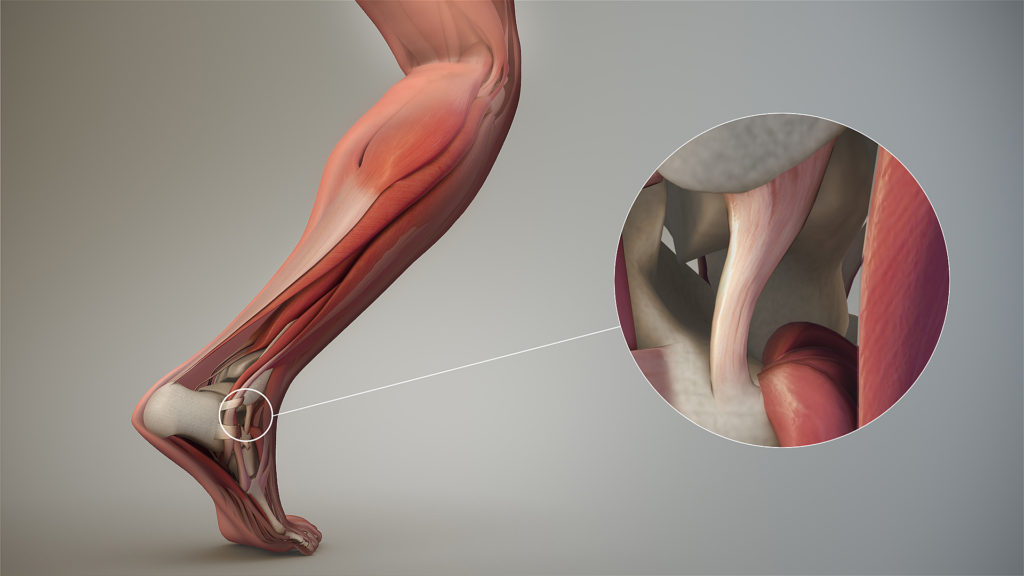A ligament is connective tissue which connects the bones and cartilage. The ligament is tough and fibrous tissue and if over stretched, it could be torn and damaged. Subsequently pain and swelling may start.
The lateral ankle ligaments are the most commonly damaged ligaments. It is very likely that if you have ever sprained your ankle, you may have partially or fully torn one of these ligaments
- Anterior Talo-Fibular Ligament
The ATFL is the weakest of the three ligaments that make up the lateral collateral ligaments. It is a short ligament that helps prevent inversion ankle sprains. Damage to this ligament results in a grade 1 or 2 ankle sprain. This is the first ligament to tear in an ankle sprain
- Calcaneal-Fibular Ligament
The CFL is another ligament that makes up the lateral collateral ligaments. It connects the heel bone(calcaneus) to the ankle bone(talus). Damage to this ligament occurs after a severe ankle sprain in which the ATFL tears first and then the CFL tears second. This results in a grade 3 ankle sprain
- Posterior Talo-Fibular Ligament
The PTFL is the strongest of the three ankle ligaments. You must have a very severe ankle sprain in order to tear this ligament. When you tear the ATFL, CFL, and PTFL, this is a grade 4 ankle sprain. This usually represents a severe injury and it can sometimes require surgery.
High Ankle Sprain
A high ankle sprain is different from a traditional ankle sprain. This involves tearing of a special ligament called the syndesmosis. The syndesmosis is what holds the leg bones(tibia and fibula) together. Rupture of this ligament represents a severe injury. Once this ligament is torn, the two bones become unstable and this can result in pain, instability, and eventually arthritis. Diagnosis of this injury usually requires an MRI and most often requires surgery depending on the severity of the tear.
Causes of ligament injuries
Ligament injuries can occur from either direct trauma or from an inversion ankle injury. These represent very common injuries and are often seen in sports. They can occur from a mis-step, stepping on uneven surfaces or on someone’s foot, or after landing awkwardly. In some instances, the injury can be less severe and be walked off while other times, depending on severity, can require extensive rehab and even in some cases surgery.
Treatment of Ligament Injuries:
Once you an ankle ligament injury, it is important that it is treated properly. Pain and inflammation around the ankle will affect your daily routine. Therefore, proper evaluation is key.
In the event that you have a mild ligament tear you may have the option to treat it at home. Physicians frequently suggest the RICE treatment method (rest, ice, compression, elevation). In some cases, these injuries are more severe and you need to see a specialist who will inspect you and perform certain tests so you can receive the appropriate treatment.
The recovery after these injuries all depends on the severity of the injury as well as proper treatment of the injury. In some cases, patients may be back to activity within a couple days while in other cases it can take 4-6 weeks to heal. If there is any doubt on the severity of injury, it is imperative that you see us to get a full evaluation which includes x-rays to rule out any fractures.
We here at Texas Foot and Ankle Consultants treat any and every foot and ankle condition. If you believe that you have an ingrown nail and it’s not responding to at-home care, please do not hesitate to contact us and we will resolve your pain the same day.


